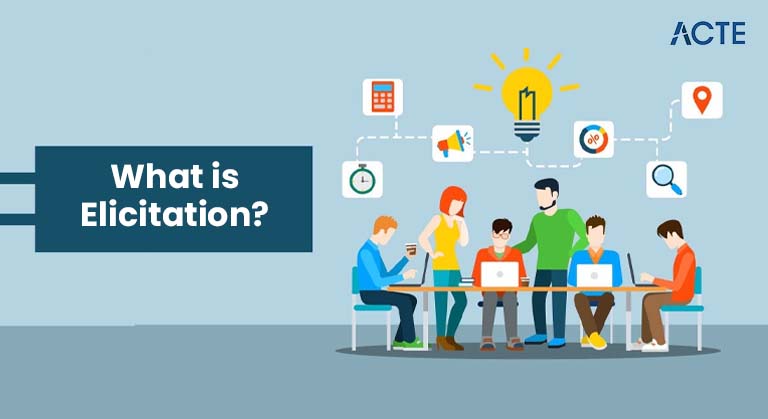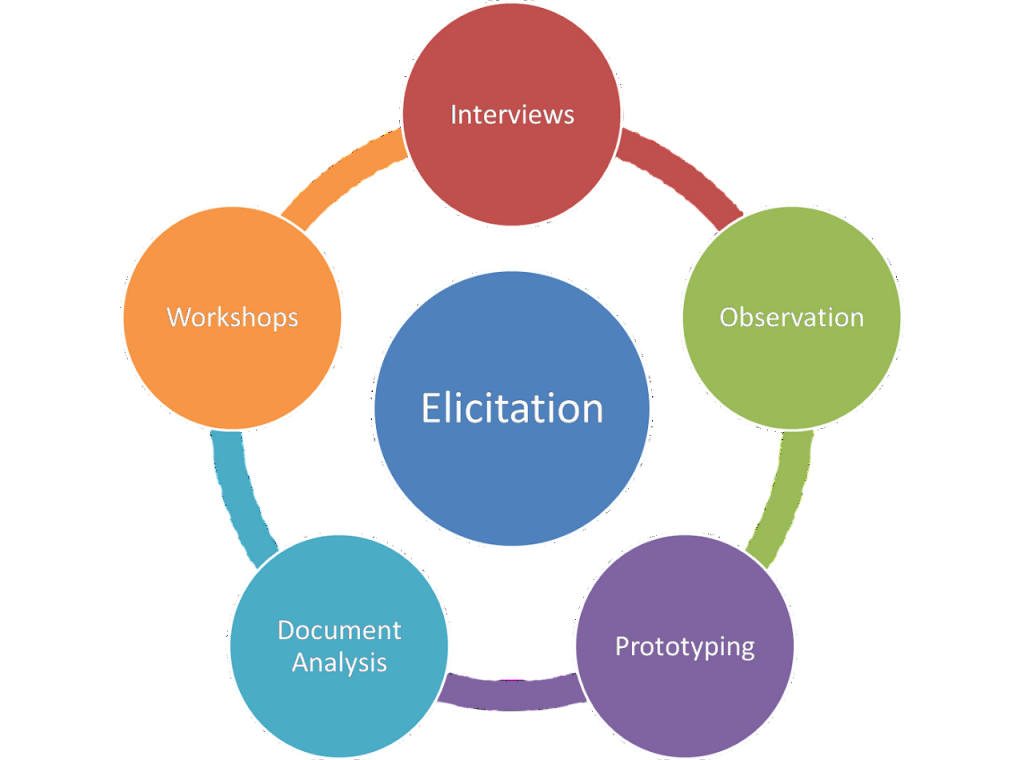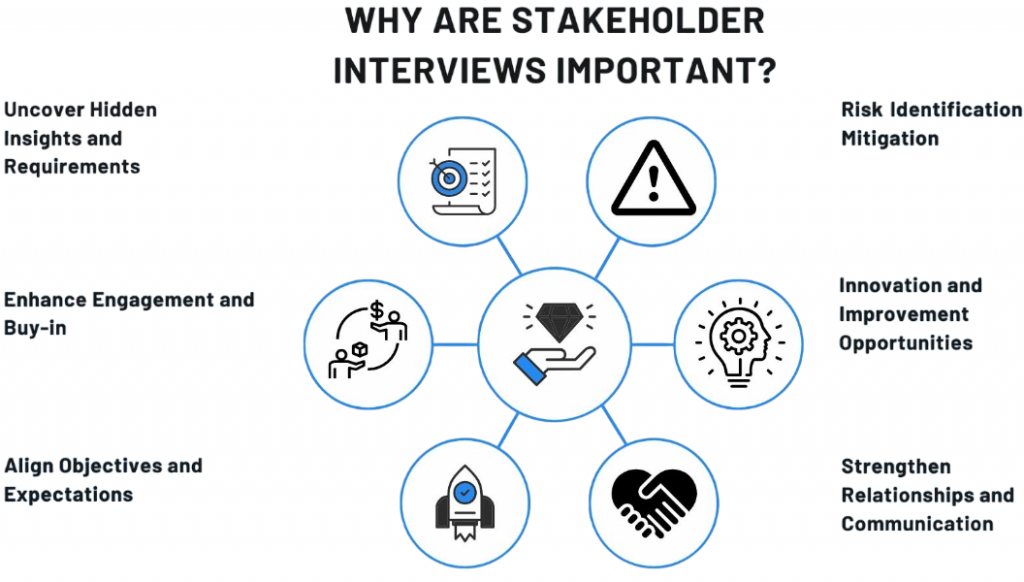
- Definition of Elicitation
- Role in Business Analysis
- Elicitation Techniques
- Interviewing Stakeholders
- Document Analysis
- Workshops and Brainstorming
- Observation Methods
- Surveys and Questionnaires
- Prototyping and Storyboarding
- Challenges in Elicitation
- Best Practices
- Tools Used in Elicitation
- Conclusion
Definition of Elicitation
What is Elicitation in business analysis refers to the process of gathering information and requirements from stakeholders and other sources to ensure the successful development and implementation of business solutions. It is a foundational activity in the business analysis lifecycle and is critical for identifying the needs, expectations, and constraints of all parties involved, a skillset that is sharpened through Business Analyst Training. Understanding what is elicitation helps clarify that it is not a one-time activity; it is iterative and often requires revisiting and refining information.Business analysts (BAs) use elicitation to understand current processes, identify pain points, and determine the needs of stakeholders. Elicitation in requirements engineering involves more than gathering facts; it demands thoughtful dialogue to uncover real needs and ensure shared understanding. It is not merely collecting data but rather engaging stakeholders through active communication, critical questioning, and collaborative techniques to extract valuable insights.
Are You Interested in Learning More About Web Developer Certification? Sign Up For Our Web Developer Certification Courses Today!
Role in Business Analysis
The role of elicitation in business analysis is pivotal. It ensures that all requirements are accurately captured, understood, and documented, reducing the risk of project failure. Effective elicitation:

- Clarifies business goals and stakeholder expectations.
- Discovers hidden requirements.
- Identifies assumptions and constraints.
- Helps prioritize features and functionalities.
- Ensures alignment between business needs and technical solutions.
Without proper elicitation, projects may suffer from scope creep, misaligned deliverables, or stakeholder dissatisfaction. A BA acts as the bridge between business needs and technological capabilities, making elicitation their most vital tool.
Elicitation Techniques
Business analysts use a variety of techniques to elicit requirements. These methods can be broadly categorized based on the type of interaction: one-on-one, group-based, observational, or research-oriented. Common elicitation techniques include:
- Interviews: Conducting structured or unstructured conversations with stakeholders to gather insights.
- Workshops: Interactive sessions that promote collaboration and consensus among participants.
- Surveys and Questionnaires: Written instruments that collect quantitative and qualitative data.
- Observation: Watching users perform tasks to understand workflow and identify inefficiencies.
- Document Analysis: Reviewing existing documents, such as process flows, manuals, and reports.
- Prototyping: Creating mock-ups or models to visualize requirements.
- Brainstorming: Generating a wide range of ideas quickly with stakeholder groups.
- Focus Groups: Structured discussions with selected participants to gather diverse perspectives.
- Interface Analysis: Evaluating interactions between systems, users, and devices.
- Mind Mapping: Using visual tools to represent ideas and their relationships.
Choosing the right elicitation techniques depends on the project’s scope, stakeholder availability, and the nature of information required.
Excited to Obtaining Your web developer Certificate? View The web developer course Offered By ACTE Right Now!
Interviewing Stakeholders
Interviews are one of the most common ways to gather requirements. They offer a direct and personal method to collect information from stakeholders. These interviews are especially helpful for capturing both stated needs and knowledge that may not be documented elsewhere. There are three main types of interviews: structured interviews, which follow a list of questions to keep things consistent; unstructured interviews, which are more conversational and flexible, allowing discussions to flow naturally; and semi-structured interviews, which mix guiding questions with the opportunity to explore new insights, all of which are essential techniques covered in Business Analyst Training. In many cases, interviews are complemented by a Business Requirements workshop, where cross-functional teams collaborate to refine goals and uncover hidden needs that may not surface in one-on-one sessions. To conduct effective interviews, careful preparation is essential. This involves identifying the right stakeholders, clearly defining the interview goals, crafting thoughtful questions, and building rapport to encourage open communication. During the interview, it’s important to listen actively, ask follow-up questions when needed, and document the insights accurately. A skilled interviewer not only gathers information but also ensures clarity and understanding throughout the conversation.

To conduct effective interviews, careful preparation is essential. This involves identifying the right stakeholders, clearly defining the interview goals, crafting thoughtful questions, and building rapport to encourage open communication. During the interview, it’s important to listen actively, ask follow-up questions when needed, and document the insights accurately. A skilled interviewer not only gathers information but also ensures clarity and understanding throughout the conversation.
Document Analysis
Document analysis is a valuable method in business analysis. It involves reviewing current materials to gather insights into existing systems, processes, and requirements. By examining documents such as business process models, system manuals, policy documents, previous project plans, and regulatory guidelines, analysts can gain a better understanding of how an organization functions. Elicitation in requirements engineering often begins with document analysis, which provides a structured way to uncover existing functionality and organizational workflows. This method is particularly useful for understanding the current state or “as-is” processes. It helps identify gaps or overlaps and confirms details shared by stakeholders during interviews or workshops. Document analysis also establishes a baseline for proposed changes. This ensures that any modifications are based on a clear understanding of the current environment. In the context of elicitation in requirements engineering, document analysis plays a critical role in connecting formal records with stakeholder narratives, helping analysts validate assumptions and clarify expectations. It is especially effective for upgrading legacy systems, where system behavior may not be fully documented elsewhere. It also plays a crucial role in compliance-focused projects, where following regulations is essential. By relying on existing documentation, analysts can speed up the requirements-gathering process and reduce the risk of overlooking important details.
Interested in Pursuing web developer certification Program? Enroll For Web developer course Today!
Workshops and Brainstorming
A Business Requirements workshop is particularly valuable in this context, offering a focused setting to translate stakeholder input into actionable specifications. By encouraging collaboration and structured discussion, these workshops help teams avoid miscommunication and set a strong foundation for successful delivery.
- Resolving conflicting requirements.
- Prioritizing features.
- Building consensus.
A successful workshop requires:
- Clear agenda and objectives.
- Skilled facilitator.
- Pre-selected participants.
- Use of visual aids (e.g., whiteboards, sticky notes).
Brainstorming, a part of many workshops, encourages free-flowing ideas without immediate judgment. It can lead to innovative solutions and expose assumptions. In a Business Requirements workshop, brainstorming is especially useful for drawing out critical stakeholder input and surfacing hidden needs early in the planning process. Following brainstorming sessions, ideas are usually categorized, evaluated, and refined.
Observation Methods
Observation methods help BAs understand the real-world environment where business processes occur. It is invaluable when stakeholders are unaware of inefficiencies or cannot articulate their needs clearly. Types of Observation Methods include:
- Passive Observation: Watching users without interfering.
- Active Observation: Asking questions while observing.
Benefits include:
- Discovering undocumented processes.
- Identifying user workarounds.
- Validating stakeholder claims.
Observation is often combined with other techniques to ensure completeness.
Surveys and Questionnaires
Surveys are useful for reaching a large audience quickly. They are often used to gather:
- Customer feedback.
- Employee insights.
- Usage statistics.
Effective surveys:
- Are concise and targeted.
- Use a mix of question types (e.g., multiple choice, Likert scale).
- Include clear instructions.
- Have a defined goal.
Limitations include:
- Lack of follow-up opportunity.
- Misinterpretation of questions.
Hence, surveys are often used in conjunction with interviews or focus groups.
Prototyping and Storyboarding
Prototypes and storyboards are useful tools that help stakeholders visualize the final product. They are especially valuable when requirements are unclear, when the project involves user interfaces, or when stakeholders prefer a visual model over written descriptions. Prototypes can differ in complexity. Low-fidelity prototypes, such as hand-drawn sketches or simple wireframes, are quick to create and ideal for gathering initial feedback. High-fidelity prototypes are more detailed and often interactive, closely resembling the final product. These prototypes simulate real user experiences. Storyboards complement prototypes by using a series of images or diagrams to illustrate how users will interact with the system, step by step. Together, prototypes and storyboards enhance communication between stakeholders and development teams. They help clarify expectations early on and greatly reduce the likelihood of misunderstandings later in the project.
Challenges in Elicitation
Eliciting requirements is not always straightforward. Common challenges include:
- Unclear Stakeholder Needs: Stakeholders may not know what they want.
- Conflicting Requirements: Different users have opposing goals.
- Lack of Stakeholder Availability: Hard to schedule meetings or workshops.
- Cultural and Language Barriers: Miscommunications may arise.
- Scope Creep: Constant change in requirements.
- Technological Constraints: Legacy systems or limited budgets.
Overcoming these challenges requires strong communication, stakeholder management, and adaptability.
Best Practices
To ensure effective elicitation, BAs should follow industry best practices:
- Plan Elicitation Activities: Define objectives, scope, and stakeholders.
- Engage the Right Stakeholders: Include both end users and decision-makers.
- Use Multiple Techniques: Cross-verify information for accuracy.
- Document Everything: Maintain traceability.
- Validate Requirements: Confirm understanding with stakeholders.
- Prioritize Requirements: Identify what is essential versus desirable.
- Maintain Stakeholder Engagement: Communicate regularly and manage expectations.
Consistency, clarity, and collaboration are the pillars of successful elicitation.
Tools Used in Elicitation
Various tools assist business analysts during elicitation:
- Microsoft Excel/Word: For documenting and organizing data.
- Jira/Confluence: Agile requirement tracking and collaboration.
- Balsamiq, Figma: Prototyping and wireframing.
- Lucidchart, Visio: Process mapping and flowcharts.
- SurveyMonkey, Google Forms: Survey distribution.
- Zoom/MS Teams: Virtual interviews and workshops.
Choosing the right tool depends on project needs, organizational standards, and stakeholder preferences.
Conclusion
What is Elicitation if not the cornerstone of business analysis? It bridges the gap between business needs and technical implementation. Through diverse techniques like interviews, Business Requirements workshop, prototyping, and surveys, BAs gather, analyze, and validate requirements. Despite challenges, applying best practices and the right tools can lead to clear, actionable insights that drive project success, a capability enhanced through Business Analyst Training. A skilled business analyst knows that understanding what elicitation means goes beyond asking the right questions; it involves listening, observing, and empathizing. Elicitation in requirements engineering emphasizes this deeper engagement, ensuring that analysts uncover not just what stakeholders say, but what they truly need. As businesses continue to evolve, the role of elicitation will remain central to ensuring that solutions deliver real value.

